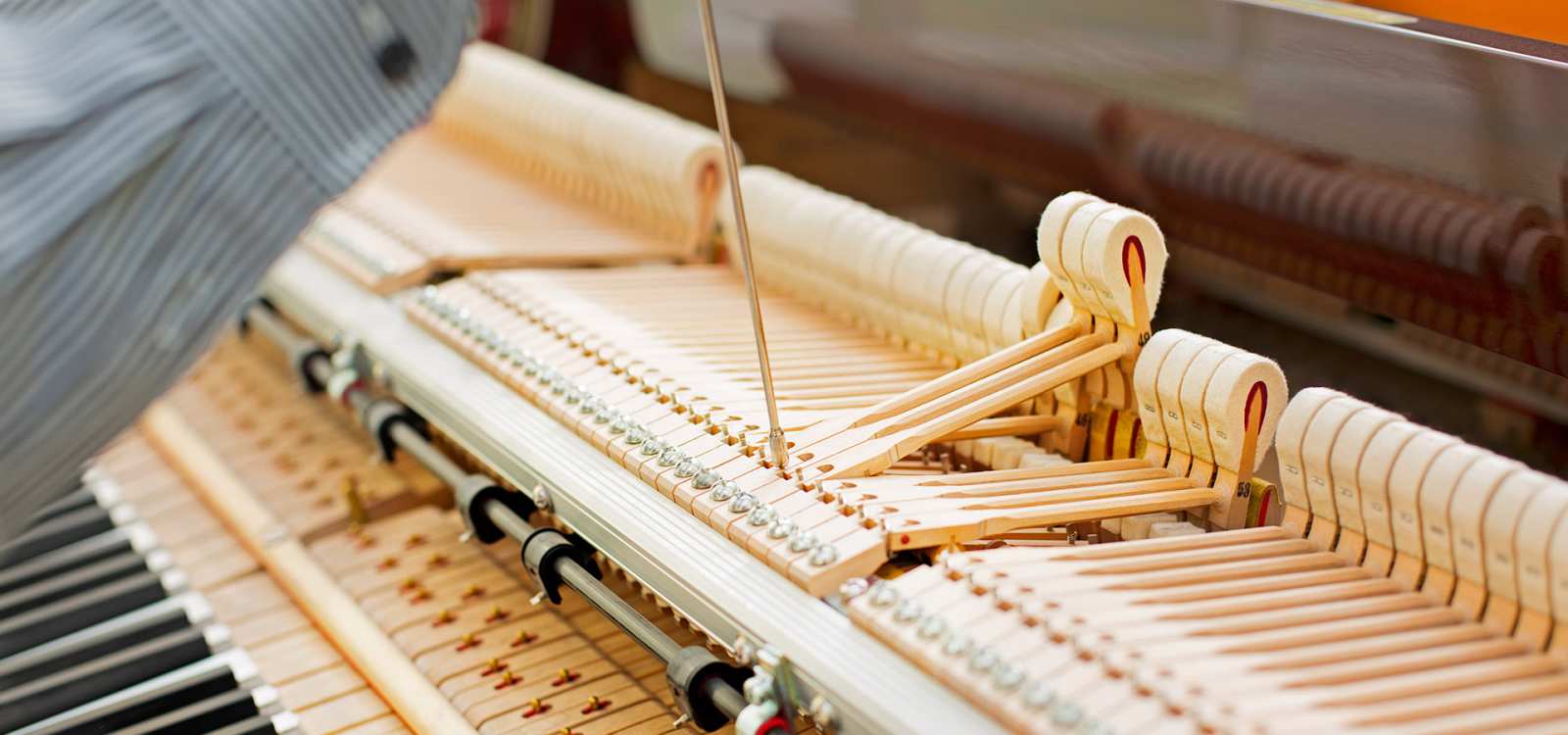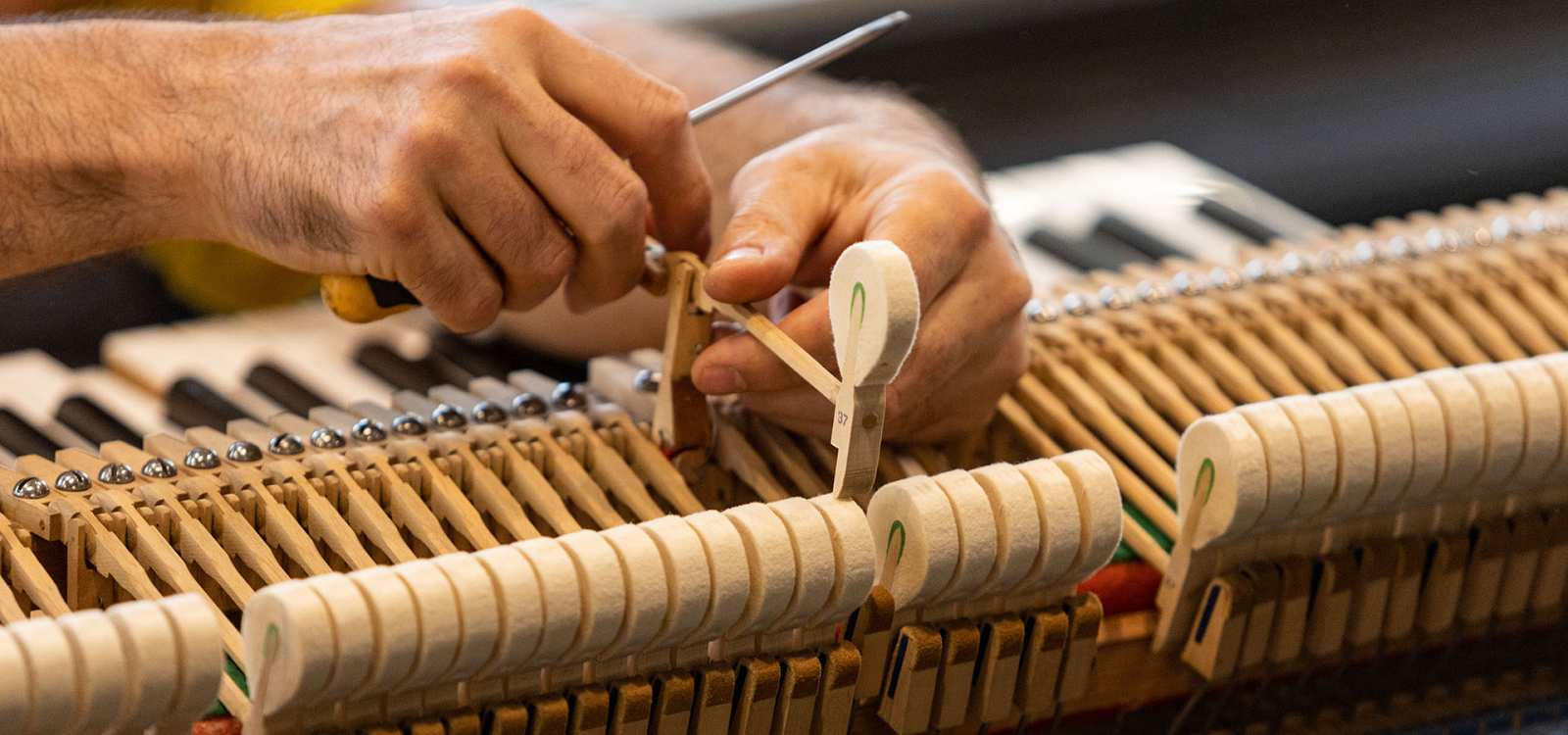Action regulation
Adjustment is the general term that refers to any work that maintains the mechanics. When a key is played, a hammer strikes the strings. This is achieved through a complex system of levers and springs that can be finely adjusted.
Firstly, it is important to note that the mechanics in grand and upright pianos are removable for ease of maintenance and repairs. The keys are simple levers and are also easily removable. In general, the design of the mechanics found in grand pianos is considered more responsive and "faster" than that of upright pianos, while larger uprights are considered better than smaller ones. However, the same fundamental relationships exist in all pianos and can be presented in a general manner.
So, since adjustment refers to any work involving the mechanics, we can identify it in three areas:
-Friction and key weight
-Moving parts and how they function
-Piano pedals
As pianos age, the metal parts gradually wear and the wood or felt may start to swell, all of which can lead to increased mechanical friction. Initially, this may be noticeable as a general slowness or inconsistency in touch, but it can eventually result in notes occasionally sticking or even getting completely stuck. The key is a simple lever. It pivots on a pin, behaving like a fulcrum as the key goes up and down like a seesaw. If this pin hole is too wide, the key will be noisy and feel "wobbly" under the fingers. If the pin hole is too tight, the key will be heavy and resistant. Before anything else is done, it is crucial that the key itself is properly fitted at these friction points. Keys can lead to a heavy and "sluggish" response and poor repetition. If the key is too tight, it won't return to its resting position. A qualified technician will have the necessary tools to ease and correct the key.
Both grand and upright pianos also have "flanges." If any of these flanges become too tight, the note won't function properly. As with the key, excessive friction in any of these mechanical flanges will make the keyboard feel heavier and slower to return to the resting position. Additionally, it will make expressive playing more difficult and inhibit proper repetition. However, not all mechanical flanges respond to lubricants. In such cases, the non-responsive parts need to be disassembled and the flange replaced. This is a time-consuming job that requires skill and experience.
Over time, repeated strikes against the strings create grooves in the hammers. The result is that the striking points of the hammers become highly compressed and irregularly shaped, causing an increasingly harsh and distorted sound.
To correct these issues, the piano action is removed so that the grooves in the hammers can be carefully filed on a fresh surface of felt. Then, once the deformed felt is removed, the hammers are realigned with the strings with the action back in position. This process can bring significant improvement to the clarity and tonal balance.
Lastly, when discussing the proper functioning of the piano mechanics, it is necessary to include the pedals that help create evocative and dynamic music. Most pianos have three pedals. However, only the right pedal is uniformly used for the same purpose. The left pedal and the middle pedal can do different things on different pianos, although there is a general acceptance of their function on most instruments. Over time, wear and usage, as well as variations in climate, can create noticeable friction and noise while using your piano, which should be resolved. It is also advisable to occasionally check that the pedal adjustments are correct.
Of course, these are just some of the adjustments that can be made by a technician. However, the provided summary should help the pianist gain an introduction to the wonderful complexity and subtlety of this extraordinary instrument.

 Italian
Italian



